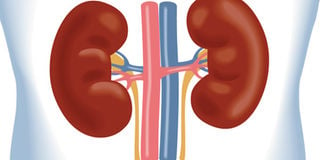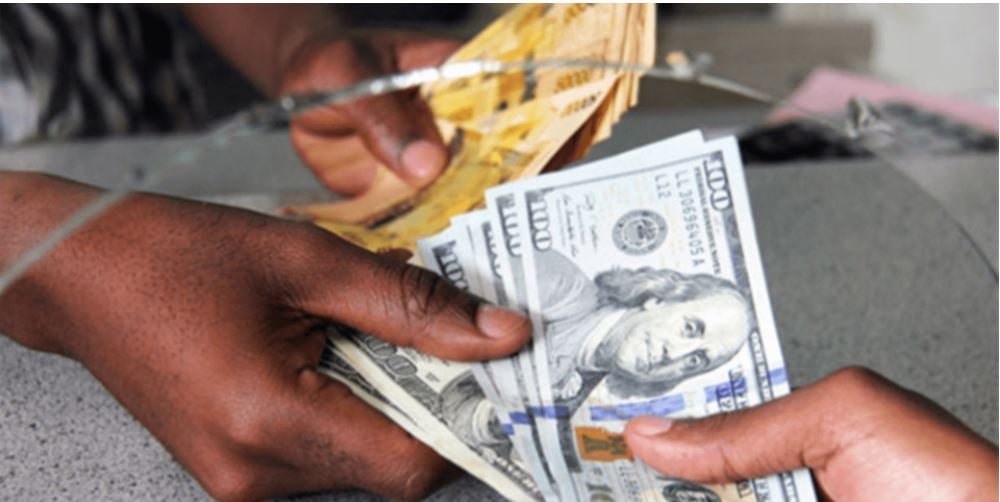Cases of kidney disease in children on the rise

What you need to know:
Is your child passing little urine or none at all? They could be having kidney disease
Doctors say that we can live quite well with only one kidney, and some people live a healthy life even when born with one missing. But while bones can break and muscles can waste away without causing a major risk to life, if both of your kidneys fail, as happens in end stage kidney failure, bone, muscle or brain cannot carry on.
Without any kidney function, the body dies which means one ought to act immediately once they discover they have a kidney problem. Why are kidney diseases on the rise among children? For a long time, kidney diseases were associated with adults, particularly those that have HIV, smokers and the diabetic. The trend has however changed. Statistics show that the number of children suffering from kidney failures has been increasing over time.
Prevalence
According to Dr Violet Kayom, a resident peadiatrician at Mulago Hospital, 10-15 cases of new kidney failures in children are registered every month. “Over 800 children were admitted at the pediatric ward last year, 240 of these had kidney complications. 14 per cent of them died and 50 per cent had nephrotic syndrome which is the commonest cause of death in kidney disorders,” Dr Kayom said.
Dr Amos Odiit, an expert in kidney diseases says, “When a child suffers from kidney failure, they tend to pass very little urine or none at all. This is because most kidney diseases attack the nephrons whose chief function is filtering the blood, reabsorbing what is needed and excreting the rest as urine.
A normal person has two kidneys doing the same thing. When one fails, the other can still work. “But when both fail,” the nephrologist explains, the toxins in the blood remain and accumulate to harm the person.”
Data from World Health Organisation shows that for children below four years, birth defects and hereditary diseases are by far the leading causes of kidney failure. Between ages five and 14, hereditary diseases continue to be the most common causes.
Also, severe malaria and pneumonia have been identified by doctors as causes of kidney failures among children except those that are borne with it. Children with chronic kidney failure are more likely not have any symptoms until about 80 per cent of their kidney function is lost. Then, they may feel tired, have nausea or vomiting, have difficulty concentrating, or experience confusion.
Accumulated fluid appears as swelling around the eyes, legs, and belly, fluid congestion in the lungs, and high blood pressure. Children with renal failures are advised to have a restricted intake of sodium, which is found in table salt and salt substitutes. Many salt substitutes have potassium in them, which can cause renal failure.
The deputy In charge at the paediatric ward, Mulago hospital says, sick kidneys cannot easily remove excess water, salt, or potassium, so their intake should be limited. “In kids with more severe kidney failure, reducing the intake of dairy products and other protein-rich foods (such as meat, fish, or eggs) can make the filtering work of the kidneys easier,” she said.
However, while experts advise regulating protein and phosphorus intake, it’s important to remember that children do need enough protein for growth. Thus basic protein should be allowed.
Treatment for kidney failure
Dr Robert Kalyesubula, a nephrologist at the Renal unit, Mulago hospital says there are two forms of treatment available in Uganda. “We use dialysis to give the patient’s life but it does not cure the disease,” he says.
This is a process to remove waste products and extra water from patients with chronic kidney failure. It can be done by lining the child’s abdominal cavity with a filter and placing a tube containing sugar solution in the child’s belly, the solution then pulls wastes and extra fluid from the blood.
It can also be done using a machine that carries the child’s blood through a tube to a dialyser, a canister that contains thousands of fibre that filter out the wastes and extra fluid. The cleaned blood is then returned to the child through a different tube.
The high cost
“This procedure is costly in terms of time and money. It’s done three times a week for four hours and costs between Shs350,000- Shs450,000 per visit, which most patients can not afford,” Dr Robert Kalyesubula, a nephrologist says. However, the dialysis can only prolong the patient’s time as it doesn’t guarantee cure. But without it, patients will eventually die.
Aside from having very few experts in the country to deal with the disease, Mulago hospital, Panaroma Medical Centre and Case clinic are the only facilities that offer dialysis to patients with kidney failure. Most hospitals lack the necessary equipment to screen for kidney disease. Doctors detect it in its advanced stages and it becomes difficult to save the situation.
Transplant option
Dr Odiit says, “The other viable option is a transplant where a healthy kidney is planted in the child’s body. Kidney transplant is very expensive. In India it costs $15,000 (Shs36m), UK, £60,000 pounds (sh228m) and in South Africa, $30,000 (shs72m).
This procedure largely depends on the availability of a kidney donor with similar blood group and funds. The experts advise that people who have transplants must take drugs to keep the body’s immune system from rejecting the new organ. These immune suppressive drugs can help maintain good function in the transplanted kidney for many years.
However, they may have some undesirable side effects such as making a child vulnerable to infections. Stella nakanjako, a mother to Joel, a kidney disease patient, says, she can only pray that God helps him survive the disease. she says it has crippled her rather jolly son since she can neither afford a dialysis nor a transplant.
For now, medics can only manage his condition with pain killers and anti-hypertensive drugs to reduce the fluids in the body. Mulago hospital registers 40-60 new cases of kidney disease every Tuesday of the week. Renal transplants are not performed in Uganda. Most patients who can afford the transplants seek medication in India, South Africa and Nairobi of late.




